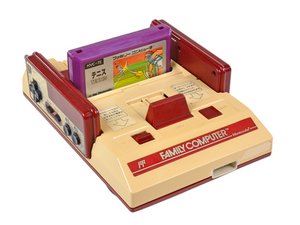@oldturkey - True, the primary of the ac adapter could have a voltage mismatch, but I think it unlikely unless of course Ryan had moved to a country where the primary voltage is now 220Vac instead of the original 110Vac?
@Ryan - Please understand the notion of cause and effect in electronics. If the power supply fails (the effect) then it is because it is suffering from a too large a load (the cause).
This excessive load could be caused by the famicom itself as perhaps a voltage regulator or something else has failed and is in effect behaving like a short between + and - of the supply input (this would also hold true if a pet chewing on the adapter output wires resulted in shorting the + and -). Hence if you simply replace the AC adapter and try to plug the new one into your famicom, then this new adapter will also cook, crash and burn.
It is important to understand that the load on the secondary of the transformer is "reflected" onto the primary, hence it is the primary that also overheats. When a transformer overheats, the resin coatings on the copper wires that constitute the coils become brittle and in some cases just burn away, resulting in short circuits between adjacent windings. This in turn creates a shorter and shorter circuit, resulting in more and more reflected/non-reflected current flow, resulting in more and more heat being generated. A snowball effect; or better put, thermal-runaway.
But all this is just a bit of common sense being applied to speculative faultfinding.
Pictures and some multimeter skills would be best.
Good luck.
Questa risposta è stata utile?
Votato
Annulla
Punteggio
1
Annulla
Scorri questo thread per trovare il posto appropriato per questo commento. Quindi, fai clic su "Allega commento a questo post" per spostarlo.


 1,1k
1,1k  897
897  2,4k
2,4k